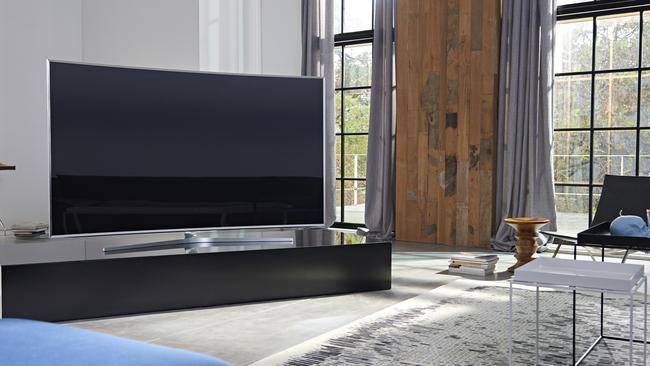3D TV fades from view as Samsung pushes HDR in 2016 range
Samsung has dumped 3D as it pushes high dynamic range on its 2016 premium sets.

Samsung has discontinued support for 3D on its new 2016 Australian TV range that it launched locally today.
“To be completely upfront, none of our TV’s are 3D ready at all,” group product manager Simon Howe told The Australian.
Samsung’s decision is the beginning of the end for the active format form of 3D, which requires expensive battery-powered glasses that rapidly shutter open and closed.
Over at LG, which uses passive 3D, the situation isn’t as grim with some models supporting 3D and others not.
But 3D is on the way out. The TV industry has moved on with 4K and HDR (high dynamic range) the new aspirations.
There has too been a lack of 3D content with cartoons and endless underwater adventures typifying content.
This year Samsung focused on continuing its SUHD (super UHD) range, which uses LCD LED-backlit panels rather than LG’s OLED (organically-lit LED) panels.
The marketing battle has focused on which panels offer the better picture quality. Until a couple of years ago, OLED suffered a high rejection rate at manufacture.
Samsung’s premium range this year is the 8000 and 9000 flat display 4K series and the 8500 and 9500 curved screen 4K range. A 75-inch curved model will cost $10,999 and 65-inch model $5999. A 65-inch curved set costs $6299.
Mr Howe said Samsung was reacting to the popularity of its curved screens by producing more of them this year. More than half of SUHD models sold last year were curved.
All four series feature high dynamic range which seeks to offer whiter whites, deeper blacks and finer detail in lighter and darker screen areas. Mr Howe said all 4 series had been certified as “Ultra HD Premium”, the industry standard for premium 4K sets.
The requirement included up to 1000 nit brightness and a 10-bit colour palette, which offered a broader range of fine colour variation.
The 8000 and 9000 series differed in two aspects. One was design, the other was enhancements such as the algorithm for UHD dimming.
“We wanted to make sure that our UHD range was the ultimate in picture quality for Australian consumers,” Mr Howe said. He said even 6 and 7 series TV would show HDR content but not with the same picture quality.
On Monday Samsung announced its rollout of what’s been the missing link with 4K: a high capacity Blu-ray player capable of playing 4K Blu-ray movies natively. It is selling its UBD-K8500 Ultra HD Blu-ray player for $599 locally. About 100 movies are expected to be available in the format by year’s end.
The large size of 4K movies has seen the industry adopt new high capacity disks of up to about 100 Gigabytes.
Panasonic also recently announced an Ultra HD Blu-ray disk player with its DMP-UB900 model scheduled to sell in Australia from about August-September.
The advent of this new high density Blu-ray format and players means it is possible for those with 4K TVs to watch 4K movie content in native resolution.
Netflix already offers some 4K content over the internet, but Mr Howe said Ultra HD Blu-ray disks would offer better quality 4K especially in peak use times.
“People that are streaming 4K or HDR content through Netflix during peak times are generally not watching 4K. The progressive streaming reduces the resolution to fit in with your bandwidth. So now Australian consumers can access 4K content whenever they want.”
There has been some concern that the re-emergence of Blu-ray could see the return of global zoning where Blu-ray discs bought in one part of the world wouldn’t work in another. However The Australian Screen Association told The Australian there is no regional coding on 4K Blu-ray discs.
Samsung said its 2016 premium range retains the one connect box — a single link from the TV to a box where inputs can be plugged in well away from the set. This is useful especially with mounted TVs.
As with its 2015 range, the 2016 premium range does not support its earlier evolution kit — a plug-in module that would upgrade a TV from one year to another. The last evolution kit upgraded 2014 premium sets to the equivalent 2015 models.
Samsung this year retains its home-built Tizen smart TV platform and is promoting its auto-detection feature where a TV recognises most of the devices plugged into it, such as Blu-ray and DVD players, home theatre systems, PlayStations, X-boxes and various content streaming boxes.
You no longer have to remember what HDMI1 and HDMI2 was, Mr Howe said. He said these devices could be controlled by the Samsung TV remote as well.


